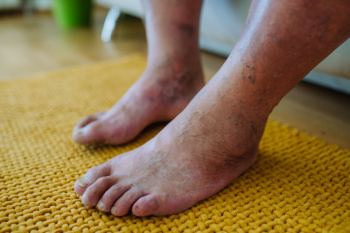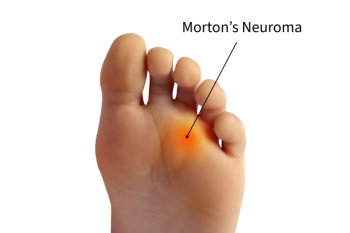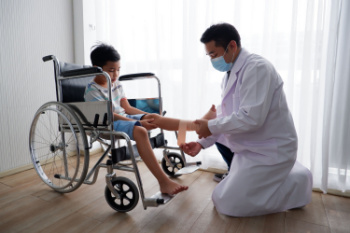Connect With Us
Blog
Items filtered by date: June 2025
Why Limb Salvage in Diabetes Can Be Life Saving

For diabetics, foot ulcers and infections can escalate quickly, sometimes leading to the threat of limb loss. Limb salvage is more than preserving a foot or leg. It can be critical to survival. Studies have shown that major limb losses are linked to a significant drop in life expectancy and quality of life. Preventing this outcome involves early detection, advanced wound care, and improved circulation. Coordinated treatment is also important to control infection and protect tissue. Limb salvage often includes working with a podiatrist and other health care providers to address the full scope of the problem. Saving the limb also helps preserve mobility, independence, and overall health. If you have a non-healing wound or signs of infection in the foot, it is suggested that you are under the care of a podiatrist who can provide a proper diagnosis and appropriate treatment.
Diabetic Limb Salvage
Diabetic limb salvage can be an effective way in preventing the need for limb amputation. If you have a foot ulcer and diabetes, consult with Michele Kraft, DPM from Toes on the Go. Our doctor will assess your condition and provide you with quality foot and ankle treatment.
What Is Diabetic Limb Salvage?
Diabetic limb salvage is the attempt of saving a limb, such as the foot, that has an infected ulcer, from amputation. Podiatrists also try to make sure that there is enough function in the foot after the salvage that it is still usable. Those with diabetes experience poor blood circulation, which prevents proper healing of an ulcer. If the ulcer is left uncheck, it could become infected, which could result in the need for amputation.
Diabetes is the number one cause of non-traumatic amputations in the United States. Amputation has been found to lead to higher mortality rates. This translates into higher healthcare costs, and a reduced quality of life and mobility for amputees. Podiatrists have attempted to increase the prevalence of limb salvage in an attempt to solve these issues.
Diagnosis and Treatment
Limb salvage teams have grown in recent years that utilize a number of different treatments to save the infected limb. This includes podiatrists that specialize in wound care, rehabilitation, orthotics, and surgery. Through a combination of these methods, limb salvage has been found to be an effective treatment for infected limbs, and as an alternative to amputation. Podiatrists will first evaluate the potential for limb salvage and determine if the limb can be saved or must be amputated.
If you have any questions, please feel free to contact our office located in Carmel, CA . We offer the newest diagnostic and treatment technologies for all your foot care needs.
Non-Surgical Care Options for Morton’s Neuroma

Morton’s neuroma is a painful condition involving thickened nerve tissue between the toes, often caused by pressure or irritation. Non surgical care focuses on reducing stress to the area and relieving nerve irritation. Switching to wider shoes with soft soles can reduce compression on the forefoot. Custom orthotics may help by redistributing pressure and supporting foot structure. Padding between the toes can also ease discomfort by keeping them in a more natural position. Anti-inflammatory medications may reduce swelling and improve comfort. In some cases, corticosteroid injections are used to calm nerve inflammation. Activity modification, including avoiding high heels or high-impact exercise, may also prevent symptoms from worsening. If nerve pain between the toes continues to interfere with daily life, it is suggested that you see a podiatrist for a diagnosis and a personalized treatment plan.
Morton’s neuroma is a very uncomfortable condition to live with. If you think you have Morton’s neuroma, contact Michele Kraft, DPM of Toes on the Go. Our doctor will attend to all of your foot care needs and answer any of your related questions.
Morton’s Neuroma
Morton's neuroma is a painful foot condition that commonly affects the areas between the second and third or third and fourth toe, although other areas of the foot are also susceptible. Morton’s neuroma is caused by an inflamed nerve in the foot that is being squeezed and aggravated by surrounding bones.
What Increases the Chances of Having Morton’s Neuroma?
- Ill-fitting high heels or shoes that add pressure to the toe or foot
- Jogging, running or any sport that involves constant impact to the foot
- Flat feet, bunions, and any other foot deformities
Morton’s neuroma is a very treatable condition. Orthotics and shoe inserts can often be used to alleviate the pain on the forefront of the feet. In more severe cases, corticosteroids can also be prescribed. In order to figure out the best treatment for your neuroma, it’s recommended to seek the care of a podiatrist who can diagnose your condition and provide different treatment options.
If you have any questions, please feel free to contact our office located in Carmel, CA . We offer the newest diagnostic and treatment technologies for all your foot care needs.
Foot Problems in Children with Juvenile Idiopathic Arthritis

Children with juvenile idiopathic arthritis, or JIA, may experience joint pain, stiffness, and swelling in the feet that affect how they walk or play. Inflammation can appear in the ankles, toes, or the bottom of the foot, making daily movement more difficult. These foot issues are often overlooked but can have a real impact on a child’s ability to stay active and comfortable. Some children may walk differently to avoid pain, which can lead to other issues over time. Wearing supportive shoes, targeted exercises, and custom orthotics can help manage symptoms and improve function. Because arthritis in children can look different from case to case, regular check-ins with a podiatrist are important. If a child with arthritis begins to limp or complains of foot pain, it is suggested that you visit a podiatrist for a full evaluation and support.
Arthritis can be a difficult condition to live with. If you are seeking treatment, contact Michele Kraft, DPM from Toes on the Go. Our doctor can provide the care you need to keep you pain-free and on your feet.
Arthritic Foot Care
Arthritis is a joint disorder that involves the inflammation of different joints in your body, such as those in your feet. Arthritis is often caused by a degenerative joint disease and causes mild to severe pain in all affected areas. In addition to this, swelling and stiffness in the affected joints can also be a common symptom of arthritis.
In many cases, wearing ill-fitting shoes can worsen the effects and pain of arthritis. Wearing shoes that have a lower heel and extra room can help your feet feel more comfortable. In cases of rheumatoid arthritis, the arch in your foot may become problematic. Buying shoes with proper arch support that contour to your feet can help immensely.
Alleviating Arthritic Pain
- Exercises that stretch the foot can prevent further pain and injury and increase mobility
- Most of the pain can be alleviated with anti-inflammatory drugs, heat, and topical medications
- Massages can help temporarily alleviate pain.
It is best to see your doctor for the treatment that is right for your needs and symptoms. Conditions vary, and a podiatrist can help you determine the right method of care for your feet.
If you have any questions, please feel free to contact our office located in Carmel, CA . We offer the newest diagnostic tools and technology to treat your foot and ankle needs.
Ankle Injuries in High School Tennis Players Show No Gender Differences

Ankle injuries are common among high school tennis players, often caused by quick side movements, sudden stops, or awkward landings. Studies looking into whether boys or girls are more likely to get hurt show something surprising. There is no clear difference based on gender. Both male and female athletes experience ankle sprains at similar rates, and the recovery process tends to be alike as well. This means prevention efforts should be applied equally across the board. Proper warm-ups, strength training, and wearing supportive footwear can help reduce risk. Bracing or taping may also offer added protection during practice or matches. If you are a student athlete dealing with ankle pain or repeated sprains, it is suggested that you see a podiatrist for a proper diagnosis and appropriate treatment.
Sports related foot and ankle injuries require proper treatment before players can go back to their regular routines. For more information, contact Michele Kraft, DPM of Toes on the Go. Our doctor can provide the care you need to keep you pain-free and on your feet.
Sports Related Foot and Ankle Injuries
Foot and ankle injuries are a common occurrence when it comes to athletes of any sport. While many athletes dismiss the initial aches and pains, the truth is that ignoring potential foot and ankle injuries can lead to serious problems. As athletes continue to place pressure and strain the area further, a mild injury can turn into something as serious as a rupture and may lead to a permanent disability. There are many factors that contribute to sports related foot and ankle injuries, which include failure to warm up properly, not providing support or wearing bad footwear. Common injuries and conditions athletes face, including:
- Plantar Fasciitis
- Plantar Fasciosis
- Achilles Tendinitis
- Achilles Tendon Rupture
- Ankle Sprains
Sports related injuries are commonly treated using the RICE method. This includes rest, applying ice to the injured area, compression and elevating the ankle. More serious sprains and injuries may require surgery, which could include arthroscopic and reconstructive surgery. Rehabilitation and therapy may also be required in order to get any recovering athlete to become fully functional again. Any unusual aches and pains an athlete sustains must be evaluated by a licensed, reputable medical professional.
If you have any questions please feel free to contact our office located in Carmel, CA . We offer the newest diagnostic and treatment technologies for all your foot and ankle needs.
